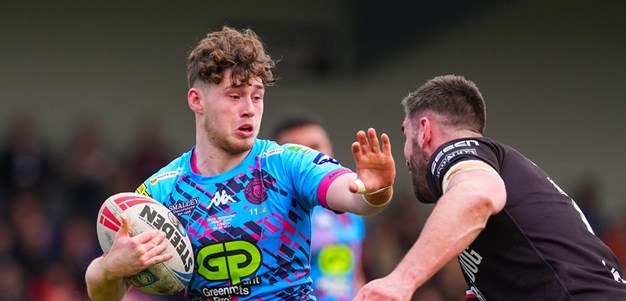We’re just one round into the season but there’s no doubt the rule changes are making the game quicker - and I like it.
If you listen to what the players are saying coming out of the first round, they all agree it’s definitely faster and fitness and skill level is now a huge part of preparation.
Over the past few seasons, rugby league had become dominated by defensive techniques. The speed of the play-the-ball had become the major focus of the contest.
Defenders were clearly winning that battle, as they were allowed to get numbers into the tackle and then wrestle the life out of the attacking teams.
The new revised interpretations of the tackle rules are designed to minimise the gang tackles and the dangerous practice of the third and fourth man into the tackle, nullifying players who attacked the legs of the ball carrier, which increased the risk of injury.
As a result of the rule changes, we saw a lot more quick play-the-balls in round one as there was a greater number of one-man and two-man tackles. Referees were allowed to call ''held'' a little sooner, preventing extra players joining the tackle and suffocating the play the ball.
The reward for the attacking team is the generation of a quicker play-the-ball, which speeds the game up. As a result we saw more play-the-balls in Round 1, with 2124 compared to 2044 in Round 1 last year - an 11 per cent increase in teams attacking with the footy in play.
More attack leads to more tries and there’s no doubt fans want to see teams scoring more. It breeds excitement at games and also allows teams to stay in the contest right until the end. Round 1 saw 59 tries scored across the weekend - a lift on last season.
Teams will feel like they are a chance of winning in the 75th minute even if they are down by 10 points, as they know they can get through more plays and have more chances with the ball than they’ve had for a long time.
There’s no doubt some coaches will now be reassessing their attacking and defensive techniques. With the new interpretations of the rules, coaches are now rethinking their training schedules and allocating their players to spend less time with the wrestling coach and more time with the skills coach, honing the skill base so teams can play some footy.
The Roosters built their 2013 premiership success on defence but really struggled late in their defeat to the Rabbitohs last week due to the fatigue caused by the increased speed of the game. Players like Issac Luke in particular ran at will, creating many attacking opportunities for his team which gave them good field position and point-scoring sets.
Last year the NRL witnessed an average of 185 dummy-half runs per round, whereas in Round 1 this season we have already seen that increase to 201. The faster pace of the game took its toll on the bigger guys around the ruck with the smaller, nippy players running a lot more and creating more opportunities for their teams in attack.
The quicker ruck speed is encouraging the attacking dummy-halfs to jump out and run more, with their players pushing up over the advantage line as they put them into space.
South Sydney's lethal attacking hooker in Luke had 10 runs and led the dummy-half charges on weekend. He was closely followed by the Parramatta’s Nathan Peats (8), Cronulla’s Isaac DeGois (7), Penrith’s James Segeyaro (6) and Kevin Kingston (6), and Bulldogs rake Michael Ennis (6).
I see the other players to benefit this year as being those that have good one-on-one tackle techniques, provided the referees reward dominant tackles.
In the past, players were often catching rather than tackling as one defender would catch and lock the ball up, with a second defender latching on at the same time as they quickly set about restraining the upper body of their opponent.
Once the ball was secure, a third defender would then attack the lower half of the body, squeezing his legs together, so no more forward motion was possible. The man with the ball would now have no leverage, no power and no control.
With the new interpretation I am hoping we will see teams trying to dominate through big hits and good line speed. We now need referees to reward strong tacklers, those who can hit one-on-one, with dominant tackle calls.
Our game always needs to have balance and be a fair contest between attack and defence. We need to identify and reward both skill sets.
Watch the NRL LIVE with a 2-week free trial.
Get the NRL Digital Pass now!




